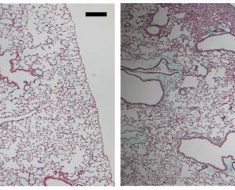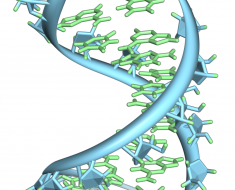Two presentations given this week at The International Liver Congress 2018 in Paris, France illustrate the impact that DAAs can have in averting HCV-related liver disease, and reducing the clinical and economic burden of this chronic infection. The first presentation summarized data from Scottish national records providing country-level evidence of a reduction in HCV-related decompensated cirrhosis since the introduction of DAAs in 2014. The second presentation described modelling data based on clinical trials of glecaprevir/pibrentasvir and UK patient tracker data, and suggested that the health and economic benefits of DAAs may be increased if treatment is initiated at an earlier stage of disease.
Rapid advances in the field of HCV treatment have led to the availability of several DAAs that now offer a cure, in the form of a sustained virological response (SVR), for more than 90% of people with chronic HCV infection. The impact of DAAs on the incidence and cost of liver morbidity and mortality at the population level is not yet known. Scotland is home to an estimated 34,500 people chronically infected with HCV and is regarded as a world leader in facing this problem. The Hepatitis C Action Plan (2006-2011) and the Sexual Health and Blood Borne Virus Framework (2011-2020) have resulted in significant increases in HCV diagnosis and treatment over the past decade. Informed by modelling work, Scotland set the ambitious target of reducing the incidence of HCV-related decompensated cirrhosis by 75% between 2015 and 2020.
The Scottish HCV Clinical and Diagnosis databases, linked with the national inpatient hospital database, provided data on the use of HCV therapy up to March 2017 and on the numbers of patients with a chronic HCV diagnosis that had presented and been admitted to hospital for the first time with decompensated cirrhosis during 2000-2016. Among 4,800 people initiated on HCV therapy in Scotland between April 2014 and March 2017, 83% were treated with DAAs and 94% achieved SVR. This scale up of therapy, compared with the 3 preceding years, was associated with a 29% and 39% reduction in first-time presentations for decompensated cirrhosis among those previously diagnosed with chronic HCV and those with chronic HCV at the time of admission, respectively.
“Scotland’s national surveillance of HCV treatment and disease means we are ideally placed to examine the early impact of DAA treatment on HCV-related disease progression at a population level,” explained Professor Sharon Hutchinson from Glasgow Caledonian University, UK. “We have been able to show that scale up of therapy has resulted in substantially fewer patients presenting with decompensated cirrhosis but has highlighted the need to address comorbidities that pose a continued risk of liver disease progression in those clear of the virus.”
In the second study, a health state transition model of the natural history of HCV was developed to forecast liver-related clinical and economic outcomes over a lifetime. The model population and treatment efficacy data were based on clinical trials of glecaprevir/pibrentasvir. Genotype, fibrosis distribution and costs were based on Scottish patient tracker data and on literature review. Rates of decompensated cirrhosis, hepatocellular carcinoma, liver transplant and liver-related death were predicted to be lower if treatment was initiated when disease was mild (F0-1) rather than delayed until compensated cirrhosis was present. As a consequence, early versus delayed treatment resulted in lower lifetime costs, including those associated with extrahepatic manifestations (F0-1: £33,297; compensated cirrhosis: £61,204), and greater lifetime quality-adjusted life years (F0-1: 16.20; compensated cirrhosis: 10.05).
“This study shows the impact that delayed treatment can have on a patient’s life, including consequences such as liver morbidity and mortality, as well as extrahepatic complications,” said Dr. Sammy Saab, Professor of Medicine and Surgery at the University of California, Los Angeles. “Beyond benefits to the patients, early treatment can generate significant savings by reducing clinical risks and allowing for a shorter, 8-week duration of treatment across all genotypes.”
Source: Read Full Article





